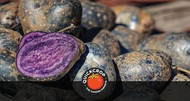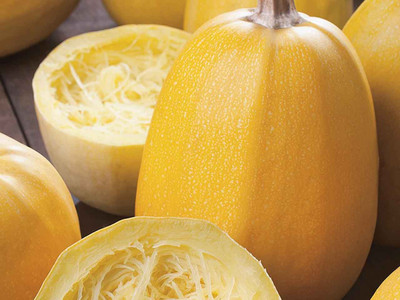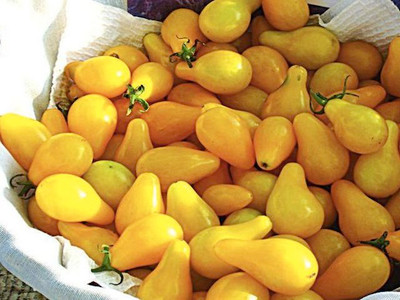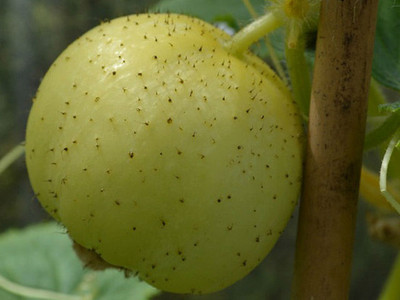Unusual Fruit and Vegetables to Grow in a Polytunnel

When it comes to polytunnel growing, there tends to be something of a consensus around which crops are reliable staples in a temperate climate such as in the UK. Indeed you will have probably heard us going on ad nauseum about tomatoes, cucumbers, salads, broccoli or carrots.
We will often say that when you are starting out with a polytunnel (or with a garden in general) that it’s good to get some easy wins under your belt, and for this reason it’s best to stick to the tried-and-true. But it’s not just that either: experienced heads like us will keep coming back to these crops year after year for their taste and nutritious value.

However, it’s good to keep things interesting in the garden, and there are some weird and wonderful crops out there to try your hand at if you feel like your annual crop is getting a bit…samey? Colourful and unique-looking vegetables bring a touch of aesthetic beauty to the garden. They can also grab your children's attention in the garden, or make dinner time more enticing.
1 - Purple Rain Potatoes
While the distinctive purple skin is enough to mark them out as a welcome novelty, when you cut Purple Rain potatoes open they’re even more impressive, with textured shades of purple that have the appearance of a constellation.
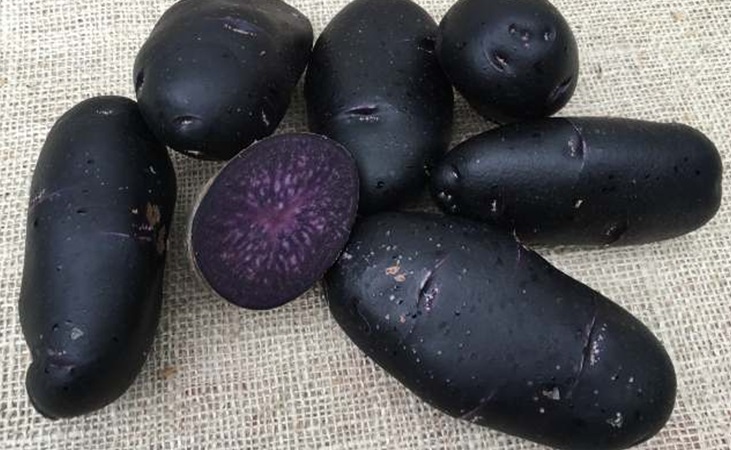
The purple is also a sign of healthy goodness: the colour is brought about by compounds called ‘anthocyanins’, which are also found in high concentrations in berries and grapes. These compounds can have very positive health benefits, which although unproven have been linked to protection against cancer, dementia or cardiovascular disease.
They are an early maincrop variety and you will be pleased to know that they retain some of their colour when cooked, particularly if you keep the skin on.

2 - Loofah
A unique crop in more ways than one, loofahs initially have a squash or cucumber-like appearance, but it’s when they reach full maturity that things really start getting crazy. At this point they can be dried and peeled, revealing one of those loofah sponges that are used to clean and exfoliate skin! Yes, this is the origin of the body loofah.
Growing loofahs can be a bit of a challenge over here, so don’t plan a homemade sponge stall just yet. They will have the best chance of succeeding in a polytunnel, but they will also need long periods of warm weather to achieve their final form (which is not something we can always rely on). Provide them with regular watering and a weekly feed.

Be aware that if all goes well they will take up their fair share of space, with a long, winding growth habit. If your daily skin routine is already on point, you can harvest the fruits when they are young and eat them.
3 - Tomato Noire de Crimee
It may or may not surprise you that there’s a whole world of tomato varieties out there, and not just the red ones you see in shops or markets. There’s the deep purple ‘Chocolate Cherry’ tomato, the tangy, striped ‘Green Zebra’, the aptly-named ‘White Wonder’, or the delightful ‘Brad’s Atomic Grape’ which sounds like a tribute band.

For both appearance and taste, we strongly recommend the heirloom beefsteak variety ‘Noire de Crimee’, or Black Krim as it is also known. These striking ribbed maroon fruits have a distinctive sweet flavour that is often described as ‘smoky’, with a hint of natural saltiness.
With its meaty texture, this tomato lends itself well to slicing for sandwiches and salads. It’s a vigorous grower that ripens early for a beef tomato (harvest from July).

Beefsteak Tomato 'Noire de Crimee'
View Product
4 - Crystal Lemon Cucumber
Crystal lemon cucumbers have a somewhat evocative name to live up to, and live up to it they do. They have an almost ornamental appearance, with pale yellow-greenish skin that is sporadically marked by black bristles. Unusually for a cucumber, it is shaped like a golf ball at 2-3 inches in diameter.
Crystal Lemon (also known as Crystal Apple) is a prolific crop that can be trained vertically. You will know it is time to harvest when it starts to take on a deeper yellow colour. It has a crisp texture and a sweet, refreshing taste.
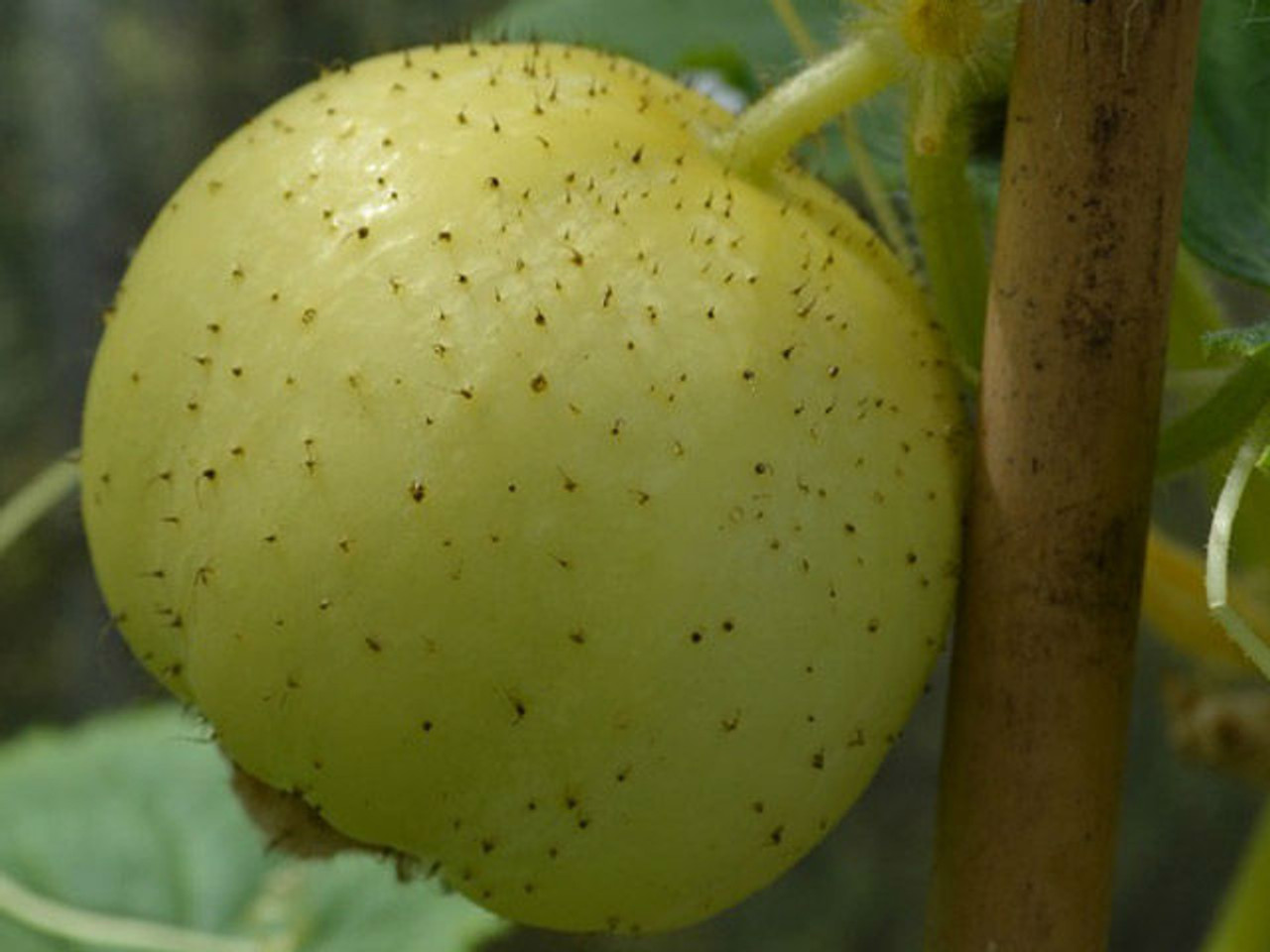
Cucumber Crystal Lemon
View ProductCucumbers are popular choices for pickling, and despite its unique appearance Crystal Lemon is no exception. It also makes for a great addition to platters or salads.
5 - Spaghetti Squash
This is an unusual, unique crop not so much for its appearance (although the creamy yellow flesh is pleasing to look at) but for what’s inside. When the squash is cooked, the stringy inner flesh separates into strands that have the texture and appearance of spaghetti or noodles.
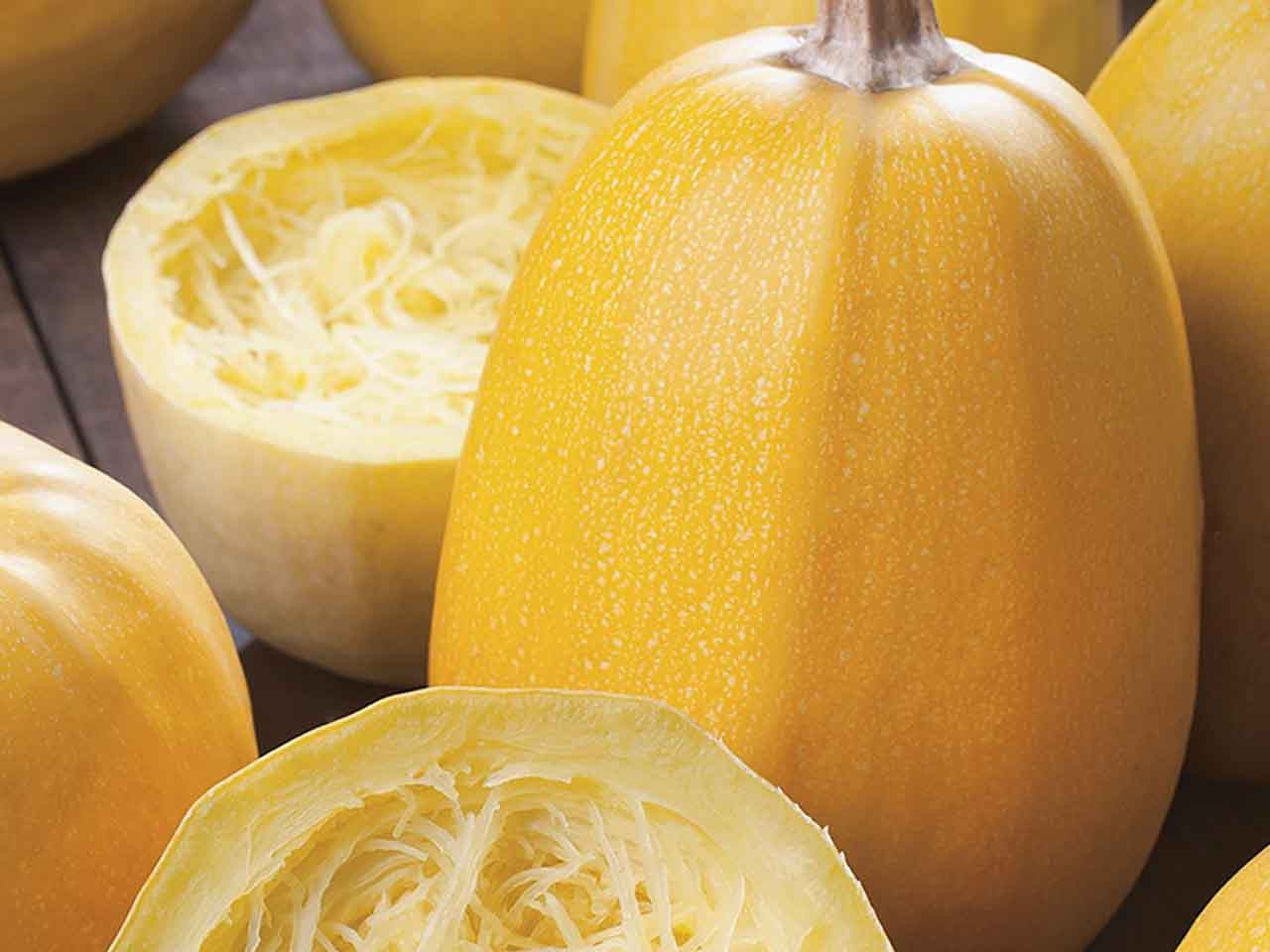
Summer Squash 'Vegetable Spaghetti'
View ProductThis flesh can be scooped out, and with its delicious mild taste it serves as a great low-calorie or gluten-free alternative to pasta and spaghetti dishes!
6 - Watermelon Radish
This delightful Chinese heritage radish is a great option for Autumn growing or overwintering in the tunnel. The inner flesh ranges in colour from pale pink to vibrant magenta, with concentric rings adding to the beauty.
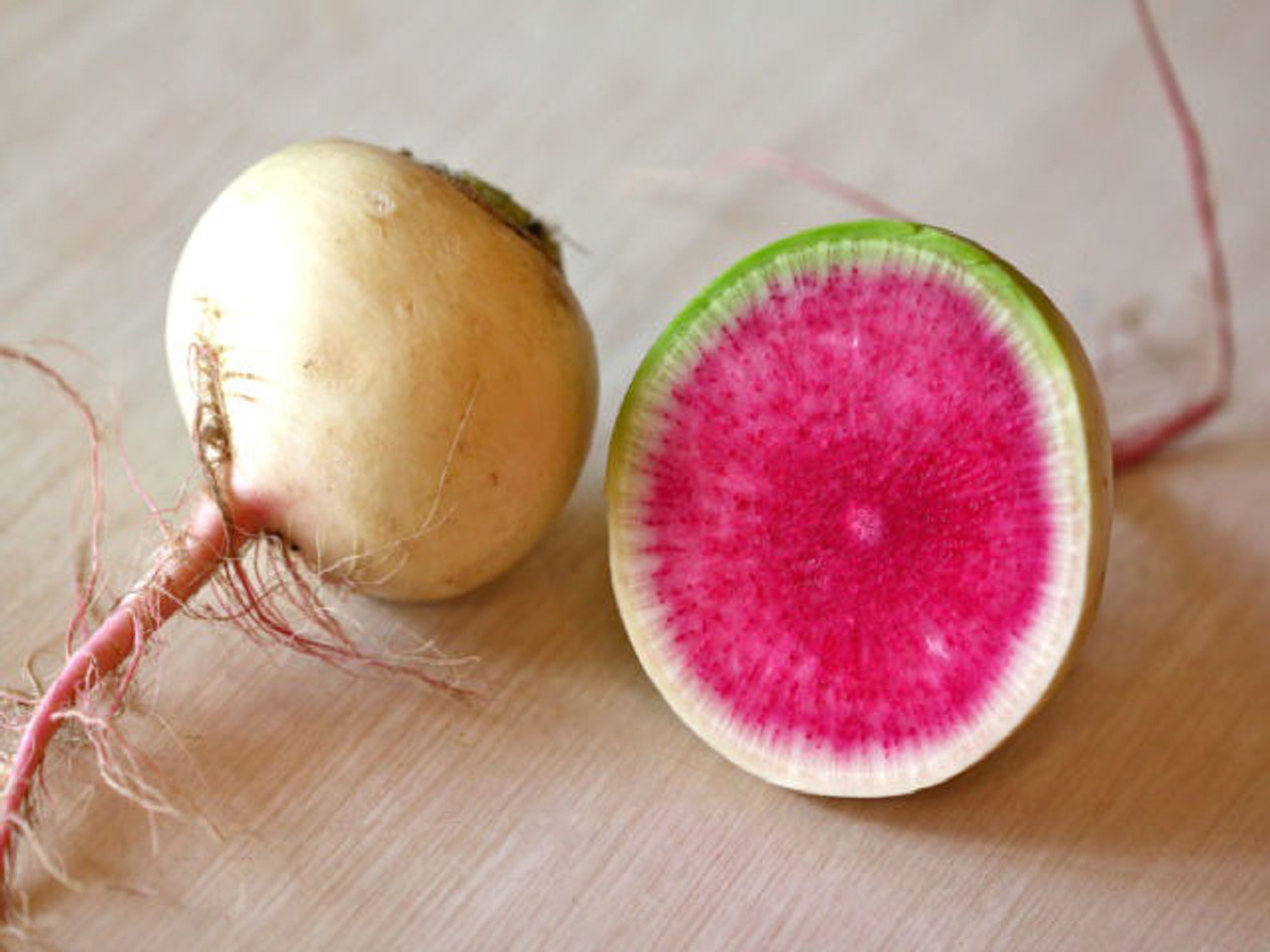
Radish 'Watermelon'
View ProductWatermelon radish has a milder taste than you can traditionally expect from radishes, with a sweet peppery quality. Best when sliced, it is often added raw to salads or dishes, but is also delicious when roasted, sauteed or pickled.
The crop is deceptively fast-growing and can tolerate low temperatures. The oval or round shaped greenish-white roots can grow to 4 inches wide. When overwintered it can be ready to harvest in early spring.

7 - Yellow Pear Tomato
Continuing the recurring theme of one crop pretending to be another crop, these teardrop-shaped tomatoes have a distinct yellow colour and a mild, sweet taste.
Yellow pear tomatoes have a tall cordon growing habit that can reach up to 8 ft high, so they will need some good sturdy support. This is a very productive variety, so be prepared for copious clusters of these bite-sized wonders.
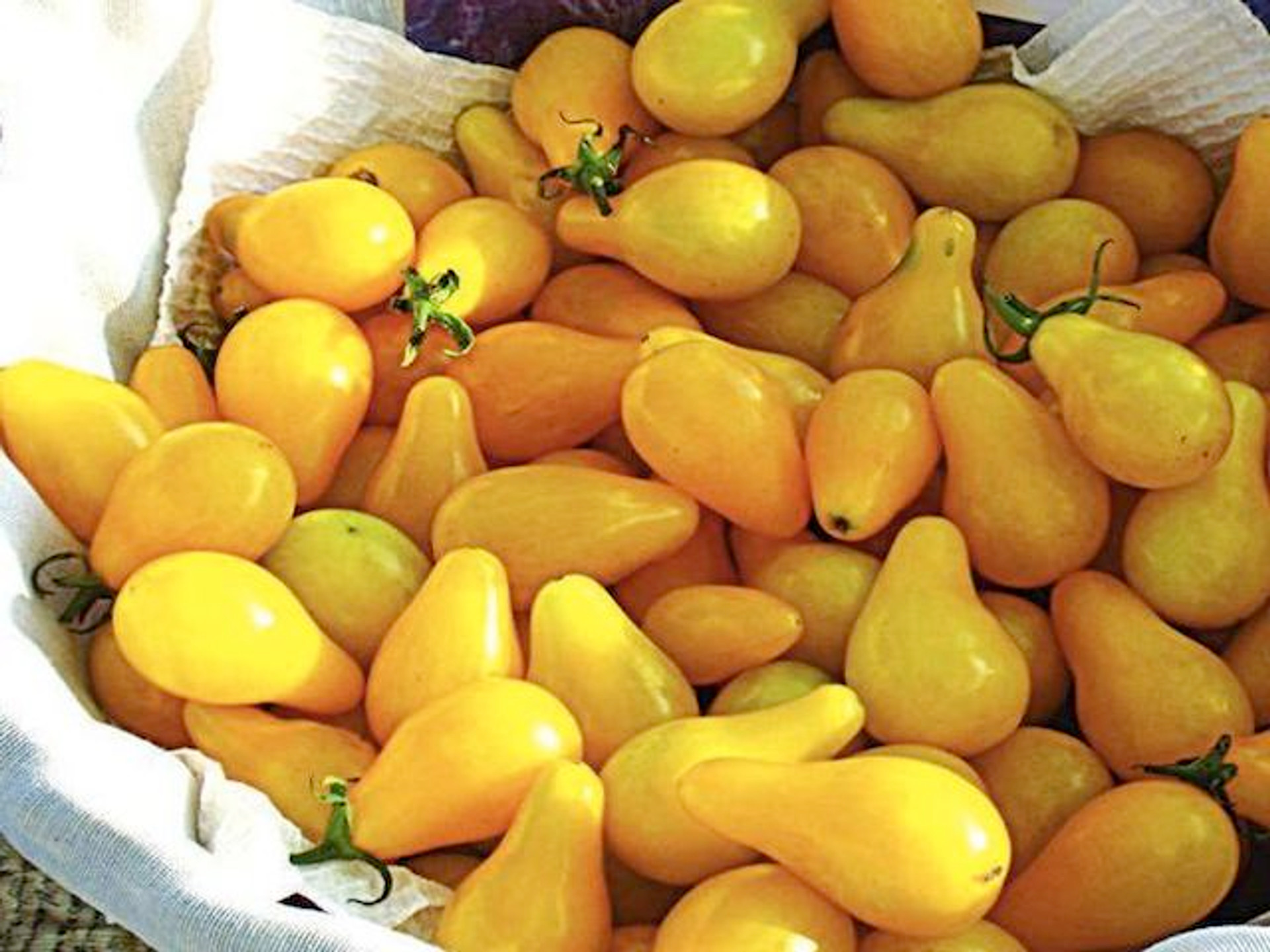
Tomato Yellow Pear
View ProductTip: if you do find yourself with an overabundance of fruits, use them to make super-tasty yellow tomato sauce! Or indeed do this either way, as they are a highly rated ‘sauce’ tomato.
8 - Carrot Colour Mix
Convention can shape our expectations of what things should look like. A case in point: if you’re asked to visualise a carrot, it’s going to be orange, isn’t it? But this is not the ‘natural colour’ of a wild carrot, which in its original form was white or pale yellow (and later purple when first domesticated). Appropriately enough, it was the Dutch who were largely responsible for the increasingly widespread cultivation of orange carrots.

Carrot Colour Mix
View ProductOf course, you can always fly in the face of convention here by opting to grow differently coloured carrots in the polytunnel. The Gniff purple carrot variety, for example, has white skin on the inside that provides a striking contrast. Colour or ‘rainbow’ mixes include hues of red, white, purple, yellow and - oh, go on then - orange.
Whatever colour they are, carrots are a dependable option for polytunnel growing, and the covered environment will allow you to grow them earlier or later in the year than otherwise.

9 - Rainbow Chard
A leafy green vegetable that’s similar to spinach both in appearance and taste, swiss chard can add a dazzling display of colour to your garden and plate. Go for one of the multicolour seed mixes and you can be looking at stems in shades of red, orange, magenta and yellow.
They’re not just there for decoration either, as these thick and juicy stems are arguably the tastiest part.
‘Rainbow chard’ isn’t a variety in and of itself. The pack that we supply includes seeds from 4 different varieties chosen for their vigour, clarity of colour and superior flavour: yellow stemmed, red with green leaf, purple with green leaf and orange stemmed with red leaf.

Chard 'Rainbow Chard'
View ProductSwiss chard is a prolific crop that grows best in cooler conditions. When growing in the polytunnel, you can sow in late August or in January to ensure that you have continuous harvests during the quieter garden months of the year.
10 - Okra
Alternatively known as ‘Lady’s Finger’ and ‘Gumbo’, this crop produces slender, elegant 4-8 inch green pods with attractive cream yellow foliage.

Taste-wise, okra is somewhat divisive! Depending on what side of the divide you’re on, it’s very tasty when deep fried, grilled or sauteed, although the best method of all may well be pickled okras. It can take on a thick, slimy texture depending on what way you cook it.
Okra will need plenty of warmth and light over a long period, so it can be a challenge to grow successfully in stubbornly changeable climates.

Needless to say, your best chance of success will be growing it in a polytunnel or greenhouse. Check your seed info though, as some varieties will grow very high indeed (higher than 6 ft in some cases). Having said that, if they do take off they will crop prolifically.
